Do you ever think about SEO and feel a tad overwhelmed?
I’d be surprised if you didn’t – most people would rather not deal with the seeming uncertainty of search engines and how they operate.
Add some competition to the mix and they run scared.
But here’s what my years of marketing have taught me:
- SEO is not half as complicated as people make it out to be
- Your competitors can be your greatest allies if you allow them
Imagine being able to reverse engineer someone else’s success and identify their weaknesses so you can win bigger and more frequently.
That’s the beauty of competition.
The way to tap into that is through competitive intelligence. Your goal is to get insight into the strategies that are working for others in your market so you can adopt them, improve them, and gain an edge.
When it comes to search engines, this has never been more important.
With all the hype and speculation that surround how these robots work and evolve, it’s easy to forget why they exist in the first place:
To provide the best possible search experience for users through relevant, high-quality content.
For marketers, at the heart of that process is keyword research.
Interestingly enough, most people have no idea how to go about finding and selecting the types of keywords that matter.
Sure, they may generically choose a few keywords to target. They may occasionally stalk some random competitor’s website.
But I have news for you – it doesn’t work.
Here’s where many people fall short:
- They don’t take into account how competitive their target keywords are
- They don’t consider what sort of ROI they can get by targeting certain keywords
- They don’t accurately gauge the resources that they’ll need to compete and win
If you’re tired of being outranked, I’m going to show you a comprehensive method for analyzing and targeting high ROI keywords.
Here’s a breakdown of what we’ll cover:
- What is keyword competition
- Understanding keyword competition analysis
- Why you need to do competitive analysis
- How to find different keyword types and analyze their competitiveness
- Keyword competitive research-based
- Adding dimension to your keyword data
- The step-by-step play for conducting keyword competition analysis
- PART ONE: Gather your competitors SEO data and strategy
- Identifying softer target competitors
- PART TWO: Identify high ROI keyword opportunities for your site
- PART THREE: Figure out where you can beat your competitors
- Off-page SEO factors
- On-page SEO factors
- [BONUS] PART FOUR: Compete and win
Let’s get started.
What Is Keyword Competition?
Most people rely solely on a keyword tool to tell them how competitive a keyword is.
That is a mistake.
Keyword competition is the level of difficulty involved in ranking for a certain keyword. In essence, it gives you a sense of how many web pages you need to beat to claim a top spot in search engine rankings.
What influences the competitiveness of a keyword?
- Its overall popularity
- The level of competitiveness within the industry
What this means is that the days of using a basic keyword tool are over. You now have to take into account your entire competitive landscape to know just how difficult it would be to rank for a particular keyword.
Understanding Keyword Competition Analysis
Keyword competition analysis is the process of evaluating how the top rankings fare when it comes to the most important SEO factors, including their use of specific keywords.
The goal is to get a panoramic view of what you’re up against and where your opportunities are.
Why You Need To Do Competitive Analysis
Tell me, do you ever think about any of the following?
- Growing your traffic exponentially using solely the resources at your disposal
- Finding keywords with high search volume that haven’t been targeted by other SEOs in your space
- Finding the keywords that give your competitors the highest ROI
- Going after high competition keywords and winning
I bet you do. These are the opportunities that competition analysis provides.
More specifically, it tells you how you fare against your competitors
SEO, by design, has a competitive factor.
You want to rank higher, spend less, and claim the largest ROI. The way to do that is to know where you stand in relation to your competitors.
What resources do you have at your disposal? What progress have you made to improve your rankings? What more can you do to outrank the competition without outspending them?
When you thoroughly analyze these factors, you can find golden keyword opportunities that can grow your traffic by leaps.
And it allows you to pinpoint high ROI opportunities
Unless there’s no rhyme or reason to your keyword research, you need to know which opportunities will take the least amount of your limited resources to yield the highest ROI.
These high impact keywords could have a low search volume and still yield the results that you want.
Let’s consider the following scenarios:
Scenario #1: Low SEO awareness and strategy within your industry
Let’s imagine that you’re in a niche where few people put effort into SEO. Even if they do, they’re not targeting the same high ROI keywords that you’re interested in.
That’s one of the best positions to be in. You can target these low competition keywords and outrank everybody else in your industry with limited resources.
How likely is this? Considering that 45% of businesses aren’t even sure what SEO means, it’s more likely than you think.
Bear in mind, there are only a small amount of low competition keywords in a niche at any given time on the search engine (new keywords pop up as others disappear).
Scenario #2: Big brands with massive spending power have taken over the paid opportunities for keywords.
There’s no way you can compete with that, right?
Not exactly.
PPC competition is just one aspect of the keyword landscape. If you notice that massive brands are all competing to dominate the searches for a particular keyword, there are any number of ways around that.
The bottom line is, high competition from big brands shouldn’t scare you. With a thorough analysis, you can pinpoint gaps in their strategy that you can take advantage of.
Scenario #3: You’ve decided to go after the organic keywords that your competitors are targeting
Let’s be honest – you may not always have the luxury of low competition keywords.
But should that stop you?
It’s a matter of finding out which keywords your competitors are after, what they’re doing to rank for them, and how you can beat them. A thorough SEO competitive analysis will give you all these golden nuggets of information and more.
How To Find Different Keyword Types and Analyze Their competitiveness
Honest question: Have you ever encountered consumers as sophisticated as they are right now?
My guess is no. Your prospects will have several points of interaction with your business before they even consider your solutions or products.
At each point, their search intent will be different because they’ll be at a different stage in their buying cycle. If your target keywords don’t match that intent, you’ve lost the battle.
On the flip side, can you imagine the power of knowing which keywords users search for at every stage of the customer journey?
It would strengthen every single part of your sales funnel:
- Your message would be sharper and more effective
- Your click-through rate would increase because your content will be more finely tuned to the search intent of your potential buyers
- Your conversion rates would increase giving you a massive competitive edge and higher ROI
Now that you know the possibilities, the work begins.
Here’s what you need to map your keywords to the buying cycle:
- Your customer’s journey
- The keywords that correspond to each stage of that journey
- The competitiveness of these keywords at each stage
- How you can find these keywords and compete
Let’s get right to it.
Keyword Competitive Research-Based
Your customer journey maps the experience that you want to provide to your customers at every point of interaction with your business.
At each stage of this journey, your customer has a different desire and will use different types of keywords. The goal now is to find a list of keywords for each stage of that journey.
But here’s the thing:
You won’t understand how your customers navigate through the buying cycle unless you understand their desires and pain points. The way to do that is by creating customer personas – models of your ideal customers.
Most people get turned off by the humdrum of filling in customer avatar worksheets and they avoid it altogether.
Here’s why you don’t want to be one of those people:
- You want to create the right solutions – If you don’t have your finger on the pulse of their problems, how will you be sure that you’re creating solutions that your prospects will pay money for? The best way to get that insight is to give the customer research process the time and attention that it deserves.
- You want your messages to be effective – Well fleshed out personas allow you to speak directly to what your customers are thinking and feeling. It is only when you hit these emotional hot buttons that they’ll be inspired to follow through on your calls-to-action.
- You need to have a solid understanding of your customer journey – The customer journey is not just important for keyword research. It has utility in every aspect of your business.
After you’ve got a solid grip on your ideal customer, you can start thinking about the search queries that they’ll be using at each point in the buying cycle.
First, you need a master spreadsheet to track your keywords, their corresponding customer journey stage, and other key metrics.
Your spreadsheet should look something like this:
Awareness – Awareness comes in different phases.
Prospects go from not even knowing they have a problem to being aware of the problem and potential solutions.
At all phases of the awareness stage, your prospects would be using informational keywords. This type of search query indicates no commercial intent. This means that it doesn’t have the tendency to convert right away.
Many people neglect this type of keyword as it doesn’t have any immediate revenue potential.
That’s a mistake, and therein lies your chance to breakthrough.
At this stage, you have a relatively uncontested opportunity to build an audience, explore their pain points, and nudge them towards your solution.
Keep in mind that as prospects become more aware, the competitiveness for the keywords goes up.
How to find these keywords: First, brainstorm what people might search for before they become aware of their problem or your solution.
What search terms will they use to find content that appeals to their personal interests?
These search queries will be more generic and have a higher search volume. Think of the keywords that correspond to content like:
- Ultimate guides – These are long-form pieces of content that cover a specific topic extensively.
- Thought leadership articles – Thought leadership means leading with authority. This type of content gives insight to your target audience on a specific topic based on your beliefs, values, and experience.
- Expert interviews – This is where you tap into the expertise of an authority or thought leader in your industry.
- Edutainment content – This is content that is designed to educate your audience but does so with an entertainment factor.
Take note of these keywords.
Next, think about the problems that your product solves. What search terms will prospects use to find a solution?
These terms will likely begin with question words, active verbs, or modifying words.
Here are some activators to come up with your search phrases:
- Increase …
- Make my …
- How to…
- How do I …
- Fastest way to …
- Why is my …
- I need to …
- What can I …
- Fix for…
- Best way to…
- Easiest way to…
- Tools for …
Consideration – At this stage, prospects are aware of their pain points as well as the potential solutions to their problem. They’ll be doing one of two things:
- Considering your product
- Conducting product comparisons
This is where they’ll be using navigational keywords as well as search queries for product comparisons and reviews.
Note that as the customer advances through the buying cycle, the keywords become increasingly more competitive.
This is where you can gain a competitive edge by taking the battle to Q&A sites like Quora and other third-party review sites.
How to find these keywords: Use the following formulas to brainstorm appropriate keywords.
- Experience with [Brand name]
- [Product name] features
- [Product name] benefits
- [Brand name/product name] versus [Competitor brand/competitor product]
- [Brand name/Product name] reviews
- Best [Product category]
- [Specific product]
And if you’re an established brand or you have a decent following, explore Q&A sites like Quora to find keywords.
First, type in your brand or product name in the search bar and press “Ask Question”.
In the right-hand corner, you’ll see something like this (I used HubSpot for this demonstration):
You want to pay attention to the questions that users ask about your product or business and pull your keywords from there.
Conversion – This is where prospects will make their final purchase decision and will be using both commercial and transactional keywords. This means that your chance for the conversion is right here.
How to find these keywords: First, come up with search queries that suggest purchase intent.
They’ll likely include these phrases:
- Buy
- Coupons
- Affordable
- Price
- Shipping
- Investment
Next, look for brand searches in Quora. We’ve already walked through this but Quora is a superior research tool at every stage of the customer journey.
Alternatively, you can use UberSuggest. Here’s how:
Step #1: Enter Your Keyword and Click “Search”
Step #2: Click “Keyword Ideas” in the Left Sidebar
Step #3: Review Your Keyword List
The tool will spit out a list of relevant keywords, along with metrics such as:
- Volume – the number of monthly searches on Google for the keyword
- CPC – the average cost per click if you want to pay for Google Ads
- PD – the estimated competition in paid search
- SD – the estimated competition in organic search
Retention and Loyalty – At this point, you would’ve gotten prospects to purchase your product or at least make a micro-commitment to your brand. An example would be becoming a trial user or purchasing a low ticket offer.
This stage, often neglected, is one of the most important phases of the customer journey.
Why?
This is your opportunity to go for the upsell, minimize return rates, and turn customers into loyal brand advocates. It’s also where you get to increase your customer lifetime value which is a critical business growth needle.
Later, we’ll get into how you can maximize this stage of your customer journey but for now, let’s find your search terms.
Customers will be using navigational keywords and queries that will help them to:
- Implement your product
- Troubleshoot problems that they may have
- Get the most out of your product
How to find these keywords: Brainstorm the frequently asked questions for your brand or product.
You can use the following sources:
- Customer support tickets
- Relevant Facebook groups
- Webinar chat logs and other live chat logs
- Quora and other Q&A sites
- The comment section of brand/product-related content
- Brand searches (Use UberSuggest or Google Suggest)
Adding Dimension To Your Keyword Data
You now have potential search queries for every stage of the customer journey. The task now is to flesh out your keyword data so you can conduct a more thorough competitive analysis.
The process is simple:
Step #1: Put these phrases into a tool like UberSuggest to find concrete keywords (see the example above).
Step #2: Find the individual stats for your keywords and plug them into your spreadsheet.
These stats include:
- Average monthly search volume
- PPC Competition
- Average CPC
- Competition Level
The Step-by-Step Play For Conducting Keyword Competition Analysis
You now have a database of keywords that have been mapped onto your customer journey.
Well done. This is a model of keyword research that’s far more sophisticated than what most people do.
The questions that remain are:
- Which keywords should you go after?
- What resources do you need to go after them in order to get ranked?
- How do you get the highest ROI for both your time and money investments?
Your keyword competitor analysis will give you the answers.
PART ONE: Gather Your Competitors SEO Data and Strategy
In the first pillar of your analysis, the goal is to get all the data necessary to have a panoramic view of your competitive landscape.
First, identify your top competitors – The biggest mistake that businesses make when sizing up their competition is that they don’t first establish what qualifies as competition.
Two critical qualifying criteria:
- Size of target – Do you have the capacity to go after the biggest players in your niche, or do you want to go after low-hanging targets?
- Nature of competition – Do you want to target businesses that are direct or indirect competitors? A direct competitor would be a business that offers a similar product or service that serves as a substitute for yours. An indirect competitor offers a different product or service that can solve the same problem as you.
In my experience, the smart play would be to focus on your direct competitors, and I’ll tell you why.
While the solution being solved may be the same, if the product or the method isn’t, you may have a completely different prospect pool. The differences will show up in terms of the demographics and psychographics of your prospects.
What about the size of your target? It’s up to you and the resources that you have that will help decide whether you want to compete with the biggest players or those next in line.
I recommend collecting both sets of data and letting your entire competitor analysis lead you to the best targets.
Here’s how to find both types of targets: For the heavy hitters in your niche, a simple Google search will do the trick. They’ll be the ones dominating both the organic and commercial rankings.
Simply plug in your niche keywords into the search bar.
Pro Tip: This is the ideal place to use the keywords that you came up with in the awareness stage of the customer journey. The same search queries that prospects use to find a solution to their problem will be the same queries that you use to find your competitors.
Grab the top paid and organic results and track them in a new spreadsheet. You can use different variations of your search term and pull any number of competitors that you want.
Identifying Softer Target Competitors
As we’ve seen, a Google search will likely give you the heaviest hitters in your niche.
To find low hanging to middle range targets, you simply have to plug your website into a tool like SimilarWeb or Alexa.
It will give you a range of statistics about your website. You want to pay attention to the section that says “Similar sites”.
Select the competitors that you want to go after and plug them into your spreadsheet.
Step #2 – Pull individual metrics for each competitor
Now that you’ve identified your competitors, it’s time to get key metrics for each site. This is so you could have a very thorough and precise look at your competitors’ web assets.
An ideal tool for this is Ubersuggest.
For each competitor, find the following metrics and note them in your spreadsheet:
- Organic keywords – the number of keywords the domain ranks for
- Organic monthly traffic – the total estimated traffic the domain gets
- Domain score – the overall authority of the website from 1 (low) to 100 (high)
- Link sources or referring domains – the number of domains that link back to the site
There are other metrics that will come into play in the next step, but this is what you need for now.
Why the concentration on domain and link profile?
Imagine that you’re running a relay race and you’ve been given the baton 100 meters behind the guy in the top spot. Chances are, no matter how great of an athlete you are, you’ll have a difficult time winning the race because your competitors haven’t stood still.
The great news is, link building is a relay race that you can win even if you started behind.
The number of new referring domains tells you the rate at which your competitors are acquiring new links and where they’re coming from. This means that you know exactly what to do to get ahead.
In some lucky cases, you’ll even find that a competitor’s link growth isn’t advancing at all.
Step #3 – Measure Your Competitor’s Overall SEO Health
Apart from the link profile, there are some key metrics that will give you an accurate sense of just how competitive your targets are in terms of SEO.
Here are the ones that you want to pull:
- Average monthly visits
- Pageviews, bounce rate, time on site
- Traffic by countries
- Traffic sources
- Top referrers
- Traffic demographic
The superior tools for getting this data are SimilarWeb and Follow.net.
The Quick How-To:
- Create an account on Follow.net. Opt for the free plan as it will work just fine.
- Plugin the domain name of one of your competitors into the search bar.
- Collect the key metrics listed above. Here’s what your results will look like:
A breakdown of where their traffic is coming from:
Then Rinse and repeat for each competitor. Don’t forget to save this information.
Step #4 – Find out how well your competitors are doing in each part of their customer journey
At this point, you’re armed with a thorough SEO analysis of your competitors.
However, it’s all irrelevant if you don’t know how it fits into their customer journey. While you won’t know their customer journey inside and out, you can tell just how well they’re doing based on a few key success indicators.
Naturally, these success metrics vary for each phase of the customer journey. I’ll walk you through quick litmus tests for each stage.
Awareness – Here, informational keywords are at play. As such, the greatest indicators of success are quality content and level of engagement. Here is how you test it:
First, plug in your competitor URL into Buzzsumo. You’ll get an accurate view of their top content as well as the social capital for each post.
Then, install the Ahrefs free SEO toolbar. When you conduct a search in Google, it will give you the following data in the search engine results page:
This means that you’ll have information on both the page and root domain as soon as you conduct a search. The more backlinks, social shares, and page authority a search result has, the more competitive it will be.
To put this into use, here are some search hacks:
- Intitle: “keyword” – this will give you all the search results that contain your keyword in the page title.
- site.example.com [keyword] – substitute example.com with your competitor’s domain URL. This will give you all the results that contain your keyword on that site.
Before you conduct these searches, make sure your SEO toolbar is activated so you’ll get the necessary data for each result. Alternatively, you can use the Mozbar to get the same information.
2. Consideration – At this stage, product reviews, comparisons, and presence on third party websites are what matter.
This isn’t a point where you can collect hard data but rather get a look into the qualitative matters. What are people saying about your competitors? Is there any buzz surrounding their brand or product?
Here is how you can test this:
- Plug in your competitor’s website or product into Quora. You’ll likely only get information for larger brands or those with a fair following.
- Conduct a Twitter or Facebook search for your competitor’s product or brand. This is golden for eavesdropping on the conversations that surround your competitors.
- Find pages that link to a specific product URL of your competitor. Here’s the search query that you can use: link:[product URL] or link:[brand URL]
3. Conversion – You won’t be able to tell your competitor’s exact conversion rates and ROI but you can do the next best thing.
Spy on their PPC campaigns and ad copy, and you can test it like this.
First, enter your competitor’s website into SpyFu.
Next, you’ll find a range of data but you want to pay attention to the estimated monthly Google Ads budget.
After that, find the section that says “Paid keywords’”. If a competitor is spending money on a monthly basis for PPC campaigns, it means they’re seeing a return on that investment. You can bet that they’re converting customers at a sustainable rate.
Then, assess your competitor’s ad and landing page copy. Find the tab in SpyFu that says “PPC Research” and then head to “Ad History”. You get to see the ads that they’re using now and what they’ve used in the past.
Pro tip: Check out the ads/landing pages and create a swipe file to use as a reference for high-converting copy. You can also seed your email into your competitor’s permission marketing funnel so you can get a sense of how all the elements work together.
The last step, peep into their Facebook ad history and performance.
4. Loyalty & Retention – It’s impossible to determine the customer lifetime value of a competitor’s business. It’s also tricky to tell how well they’re doing with newly acquired customers but there are some tell tales.
Here are a few questions to help you can determine your current customer loyalty and retention status:
- Is social proof largely negative or positive?
- What do the product/brand reviews say?
- What accounts are affiliates giving?
- Do they have content that addresses product-specific concerns?
PART TWO Identify High ROI Keyword Opportunities for Your Site
You’re thinking, “keywords again?”
Sure, we have walked through finding keywords that map onto your customer journey. So you already have a large database of search queries to use for your own SEO.
However, we haven’t yet taken into account your chosen competitors. In this section, we’ll add their keywords to the mix and fine-tune your database for the best results.
Step #1: Gather your competitor’s keywords.
Here, we’re going to use a tool called Alexa to find your competitor keywords to add to your existing database.
Sign up for a free trial and find the option that says “keyword research by site”. Plugin your competitor’s URL in the search box and that’s it!
You’ll find paid, organic, and opportunity keywords under the “site keywords” subsection. Simply export this data and place it into your spreadsheet.
Some of these keywords may overlap with the keywords that you already have but that’s okay.
The next step is to fine-tune your list so you can select the highest ROI keywords.
Step #2: Start filtering out keywords.
Once you have your list of keywords, it’s time to start assessing the competition for them.
You want to identify search results that suggest easy low competition targets.
Unless you have an experienced eye (and even then it’s difficult), you’re not going to be able to reliably pick out low competition keywords without a thorough assessment.
The first thing to do would be to start eliminating keywords that are obviously too competitive. You don’t have to delete these keywords from your database as they’ll come in handy in the future. Simply disregard them for now and create a new spreadsheet for the keywords that make the cut.
Since you’ve already plugged your keywords into the relevant tools to find their individual stats, you can sift through these numbers and count out the high competition keywords.
Step #3: Dig deeper.
By the end of that process, you should have a much smaller list of keywords. I recommend aiming for between 10 and 20% of what you initially started with.
Give the list a quick review and take out any keywords that don’t make sense for your site.
Once you have a final list, the hard work begins.
Your tools have told you that every query you are left with is relatively easy to rank for based on the most common metrics, which is usually a combination of domain and trust authority.
Now, you get to see how easy they are to rank for from a user’s perspective.
For each keyword, plug it in Google. I recommend starting with the top 3 results. If you’re not sure if the keyword is low enough competition, continue with the next 5 to 7.
Viewing the results for each keyword, you want to evaluate the following things:
- How many (and what quality) backlinks point to the page
- How many (and what quality) backlinks point to the domain
- If I was a user who searched this keyword, would I be fully satisfied with this result?
- Is the result from an established site or a Q&A site/forum?
- Is the result published on a free blog platform like Blogger or WordPress?
- Does it load quickly?
- Is it mobile friendly?
You can also add in any other Google ranking factors to your analysis as you’d like, but it will take you more time.
Step #4: Decide which organic keywords you’re going after.
After you analyze each keyword, you have to decide if it’s worth going after or not.
Unfortunately, there’s no magic metric or tool that will help you with this.
To make this decision, you need to first consider many factors:
- How strong is your domain? (How many links point to it, what’s its domain authority?)
- How easily can you get backlinks? (Do you have experience in SEO? Do you have a network of contacts to ask for links?)
- What level of content can you produce? (Do you have the skills to create the best content or the spending power to outsource it?)
At some point, the authority, trust, and relevance of the page you create for a particular keyword needs to exceed all other results that you have examined.
The stronger your domain, the easier it is to rank.
The easier you can get quality backlinks, the easier it is to rank.
The bigger the budget you have for content, the easier it is to produce something that no one else can match. Not only does this make it easier to rank short term, it also makes it easier to stay there.
Based on these factors, you have to determine if a keyword is worth going after during your manual review.
Step #5: Analyze paid keywords for individual sites.
When you gathered your competitor’s keywords, you also exported a list of their paid keywords. A tool like SpyFu will give you both their CPC and monthly cost. This will give you an indication of what resources you need to compete.
Here’s what you might consider:
- Do you have the finances for paid campaigns?
- Is your sales funnel solid enough to convert customers at a rate that can sustain the monthly cost of running paid campaigns?
- Do you have the ability to drive enough traffic and convert enough leads on a monthly basis?
Whatever you decide, the goal is to have a low cost per click for paid keywords.
Step #6: Form keyword clusters.
Here’s the deal.
Targeting single categorical keywords is a terrible strategy.
These are keywords that describe a primary niche or category. They come into play particularly in the awareness stage of the customer journey. They are usually low-medium volume and high competition. In extremely populated niches, the search volume may be higher.
In any event, these keywords are difficult to rank for organically and expensive to rank for paid search.
Here are some examples:
- “Content marketing agencies”
- “Golf clubs”
- “Email marketing services”
- “Cleaning services”
- “Sales automation software”
When users are at the solution awareness stage and are about to investigate their options, they will add modifiers to their categorical searches. Geography is a common modifier which introduces a great opportunity for you to dominate local searches.
For example, a prospective buyer would likely search for “cleaning services in Australia” rather than the general “cleaning services”.
While single categorical keywords may not signify immediate commercial intent, as prospects begin to use more modifiers in their search queries, that intent increases.
Let’s draw out the first example. Here are the varying modifiers that a prospect may use when searching for “cleaning services”.
- “Cleaning services in Australia”
- “Cleaning services in Melbourne Australia”
- “Commercial cleaning services in Melbourne Australia”
- “Domestic cleaning services in Melbourne Australia”
- “Commercial graffiti removal services in Melbourne Australia”
- “End of lease house cleaning services in Melbourne Australia”
As you can see, these modified search queries can get very specific. The result is that they’ll have very little search volume and not much impact on your business if they’re your only target keywords.
That’s why it’s so important to form keyword clusters. Collectively, they’ll have higher search volume, more commercial intent, and an overall bigger impact in terms of SEO.
Here’s what you can also expect when you group your keywords:
- Bring down your cost per click
- Improve your ad relevance
- Improve your click-through rate
- Increase your traffic
Truthfully, there’s no set way that you can group your keywords. Here are a few types of clusters depending on your end goal:
- Categorize keywords based on common themes
- Categorize paid keywords based on profitability
- Categorize keywords based on the customer journey (We’ve already done this).
SpyFu also has a keyword grouping function. Type in the website of choice, click on SEO research and find keyword groups in the drop-down menu.
Part THREE: Figure Out Where You Can Beat Your Competitors
Right now, you have incredible insight into your competitive landscape.
Here’s what you know:
- The keywords that are tied to your customer journey
- How well your competitors are doing in their own customer journeys
- Your competitor keywords as well as their SEO data and strategy
- The Highest ROI keyword opportunities
Well done.
But there is a slight problem:
This is all black and white data.
What about the gray matter? How do you find weak links in their armor? What do you do with all this information?
Truth is, if you’ve done the action steps up to this stage, you’ve likely pinpointed content gaps and weaknesses in the SEO strategy of your competitors.
However, I want to dive in just a bit further.
Step #1: Compare the Data collected from Part ONE and Part TWO on all stages of the customer journey and their respective keyword types.
You want to compare the keyword opportunities that you’ve chosen for your site against your competitors’ SEO data and strategy.
Here are the SEO factors you need to analyze when you are comparing the data:
Off_page_SEO_factors
Number of Backlinks – When one site links to another, it counts as a “vote” for the site that is being linked to. That’s nothing new. We know that backlinks are a key ranking factor and that they need to be part of any analysis.
However, we need to look at them on a few different levels, which is where it can get a bit tricky for beginners.
First, we need to consider that backlinks are important on both a page level (links to the exact page) and on a domain level (total amount of links to all pages on the domain).
Second, we need to consider that not all links are created equally. Links can have a different value, based on which page they are located on, where they come from, and how anchor text is phrased.
To analyze backlinks, you need a backlink database tool. For a serious analysis, I recommend the backlinks report tool in Ubersuggest.
They are, by far, the 2 most comprehensive backlink database tools. These are referred to as site explorer tools, examining the backlinks to ensure they are working properly and serving you well.
When you want to analyze a specific page (from a SERP), you’ll simply plug it into the textbox on one of these tools.
As an example, let’s say that you saw my Beginner’s Guide to Online Marketing in a search result and decided you wanted to see how hard it would be to outrank it.
Searching for “Top Traffic Pages” in Ubersuggest reveals that there are over 1,100 total backlinks to this page.
In addition, you also need to check how strong the domain is, in general, with Ubersuggest. You can do that by checking the domain score in the domain overview:
So that’s how you look at quantity, but how do you look at quality?
One high-quality link is worth hundreds or thousands of low-quality links, so it’s important to not just go by numbers.
You could examine the quality of each link individually. A high-quality link is:
- on a page that has a lot of links to itself
- relatively high up on the page
- found naturally in the page’s text (surrounded by appropriate description)
- is on a relevant page
- is on a page without too many links (link power is divided by number of links)
In other words, quite a bit goes into it.
It would be impossible to evaluate this for every single link even with an efficient site explorer.
Luckily, link database tools have a pretty good solution for us. They algorithmically try to determine the quality of each link. It’s not perfect, but it’s pretty good.
On Ubersuggest, you’re provided with the following:
Pay close attention to the domain score, as it helps identify your highest quality links. Generally speaking, anything over 40 is a high-quality link.
On-Page SEO Factors
User Satisfaction – This is related to relevance, but there are a few differences in how we will evaluate it.
It also needs to be done manually, but we can look at a few different factors to determine how much users typically like the page with the competitor keyword use.
Since we can’t see things like bounce rate and time on page, we need to rely on public information.
First, we can start with how many social shares it has. A page that everyone loves will have a decent amount of social shares. If we see a page with few shares (in niches where people aren’t embarrassed to share), we know that it’s probably not fully satisfying searchers.
On most sites, you can see the share count displayed somewhere prominent:
The second place that we’re going to look is the comment section (if there is one).
If people are saying things like:
- “Amazing post!”
- “This changed my life”
- “This is the best post on (topic) I’ve ever read”
Then, they’re likely satisfied. On the other hand, if there are a lot of complaints or suggestions, most visitors probably left the page unsatisfied and went back to the search results.
Look for both the number of comments and what’s in the comments themselves.
User Experience – Google has made it clear that it wants you to optimize your website for your visitors.
If the top results are not mobile-friendly and load slowly, it’s an indicator that Google has to rank a page that it doesn’t really want to. Unfortunately, there are no other pages of the same content quality but that are also faster and responsive. You could fix that.
This is another manual check, so you won’t need to do it for every search result. But, it can be used as a final check before you make a decision to target or not target a keyword.
First, check if the page is mobile-friendly by using Google’s own mobile-friendly test:
Put in the URL of the page and click analyze. It’s a simple pass and fail test.
Next, check site speed using a site speed tool like Gtmetrix. Paste the URL and click “analyze.”
After a quick scan, you’ll get a performance report for the site. Pay special attention to the “Page Details” box:
Content quality on the page – This is very easy to check.
Plug your keyword into Google and read the top-ranked content.
It will give you an indication of the quality of content that you’re working with.
Indicators of easy content targets:
- Little mention of the keyword in the body or title tags of the content
- No supporting data
- No outbound links
- No backlinks
- No images
- Not much substance (word count and information-wise)
- Little to no engagement (social shares and comments)
Third-party websites – We’ve already seen the importance of referring domains. The more links you have from third party websites, the better off you’ll be.
This is particularly important at the consideration stage of the customer journey where you’ll be capitalizing on product comparison and review keywords.
Here’s what you need to do:
Get your product on third–party sites – Your ability to get featured on someone else’s website depends on several factors:
- Have you established a relationship with the owner?
- What sort of authority do you have in your niche?
- What criteria do you need to meet to get featured?
- What do you have to incentivize the site owner?
- Can you afford ad placement on the site?
Convince the owner that your product is superior – This is not going to be an easy task particularly if you’re looking to replace a competitor. Here’s what you need to consider:
- Do you have testimonials and other proof elements that your product works?
- What will you do to increase the perceived value of your product?
- Do you know what objections prospects have to your product and exactly how to address them?
BONUS: Part FOUR Compete and Win
That’s your goal, right?
Of course, it is – who wouldn’t want to join the winning ranks?
Well, if you take the time to go through the action steps in each phase of this competitor analysis, you’ll be one step away from your victory lap.
The only thing left to do is secure your win.
I will walk you through the assets and action steps needed at each stage of the customer journey so you can improve your performance all around.
1. Awareness – This stage is all about content and audience building. You want to harness the personal interests of your ideal prospects and use content to convert them into leads.
Assets Needed
- Your informational keywords
- A permission marketing funnel (squeeze pages, lead magnets, email list)
Action Steps Needed
(i) Update existing content – You can swipe Brian Dean’s strategy for refurbishing old content. He increased his organic traffic by 260.7% by improving and republishing old blog posts.
(ii) Produce new and better content – Consider your new keyword profile and create pillar content based on these key phrases. This is the type of content that provides really substantive evergreen information on a specific topic. Ultimate guides are ideal examples.
(iii) Drive traffic to your content and capture leads – Priming your prospects for purchase starts at the very beginning when you’re looking for leads. You should treat your lead capture process as a legitimate transaction. The only difference is, your prospect’s email is currency and your free resource is a commodity.
2. Consideration: This is where prospects will be seriously contemplating your product as well as other solutions. Your job at this point is to nudge them in your direction and convince them that you are the superior solution.
Assets needed
- Your navigational keywords
- Affiliates
- Q&A and review sites
Action steps needed
Get featured on relevant review sites – Seek out quality review sites that your prospective customers trust. If someone is looking for a review, it’s safe to assume there’s high purchase intent.
Have a system to collect proof elements like customer reviews – Nothing helps to convert new customers like the right kind of social proof. Aim for collecting reviews that are both product and brand-specific.
Conduct your own product comparisons – You don’t have to depend on third-party sites to do this for you. Compare your product to a competitor’s and display it on your product page. Of course, you want to choose points of comparison that show you in a superior light.
Mobilize affiliates – Affiliates and brand advocates can be your greatest asset. As soon as you acquire a new customer, give them a chance to be evangelists for your brand. Most will jump at the opportunity if they feel strongly about your brand and if they’re properly incentivized.
3. Conversion – It’s at this point that you want to make the best use of your competitor analysis so you can maximize your profit.
Assets needed
- Your commercial, transactional, and paid keywords
- Your product page(s)
- Ads (if you wish)
Action steps needed
Improve your product page ranking for the buying keywords – Your product page is your #1 asset at this stage of the customer journey. It’s also true that many people who come into your funnel organically would’ve made their purchase decision before they land on this page. However, there’s a massive opportunity where paid campaigns are concerned.
Build a list of buyers – You want to get prospects to make a micro-commitment to your business by offering them a low ticket offer AKA a tripwire. This allows you to build a list of buyers who will be much easier and cheaper to convert to your core offer.
Capitalize on upsell opportunities – If you have add on items, higher ticket offers, and other profit maximizers, this is the stage to use them. Naturally, not everyone will jump at that offer but all you need is a few takers to increase your profits.
Get rid of price barriers – Price objections can be a real pain to deal with. As soon as you destroy one objection, some people will manufacture more objections at the same rate. However, others simply can’t afford your product despite their readiness to buy. To cushion that, you can offer price plans or downsells at an appropriate time. It’s all up to you.
Retention & Loyalty – This is where you get to set the foundation for increasing a customer’s frequency of purchase. Customers who repeatedly invest in your solutions improve your customer lifetime value and that’s exactly what you want.
Assets needed
- Your navigational keywords
- Cross-sell offers
- FAQ or other customer support
Create content that allows users to get the most out of your product – Ideally, you want your customers to have a smooth sailing experience with your business all round. You can craft content that gives them easier use or added functionality out of your product. Anticipate their problems and have the solutions ready to access.
Go for the cross-sell – If you have a product that speaks to a completely different pain point and solution, you can offer it up at this stage of the customer journey. You want to target customers who you know identify with the problem that you’re solving.
Conclusion
Hands up if you’re thinking:
“What if I’m wasting my time?”
“What if the algorithms change and all my hard work ends up being pointless?”
“What if I do this and all my competitors still leave me in the dust?”
If you’re questioning whether you should spend this much time on SEO and keyword research, I get it. It’s a tedious process. Your concerns are valid.
But here’s the blunt truth:
As marketers and entrepreneurs, we are forced to thrive in a dog-eat-dog space.
Competition is inevitable and you have no choice but to compete smarter so you can have a fighting chance. When you understand how you fare against your competitors, you give yourself a license to appreciate where you are and the motivation to do better.
This guide is truly the most comprehensive resource that you’ll find on keyword competitive analysis anywhere online. It has all the insights, tools, and action steps that you need to understand your competitors, tap into what makes them great and make your way to the top.
It will take time, practice, and a commitment to continuously optimize your process. The good news is that you’ll save that time, and so much more if you pick the right keywords.
What do you do to keep an eye on your competitors? What will you do differently now that you have more insight?

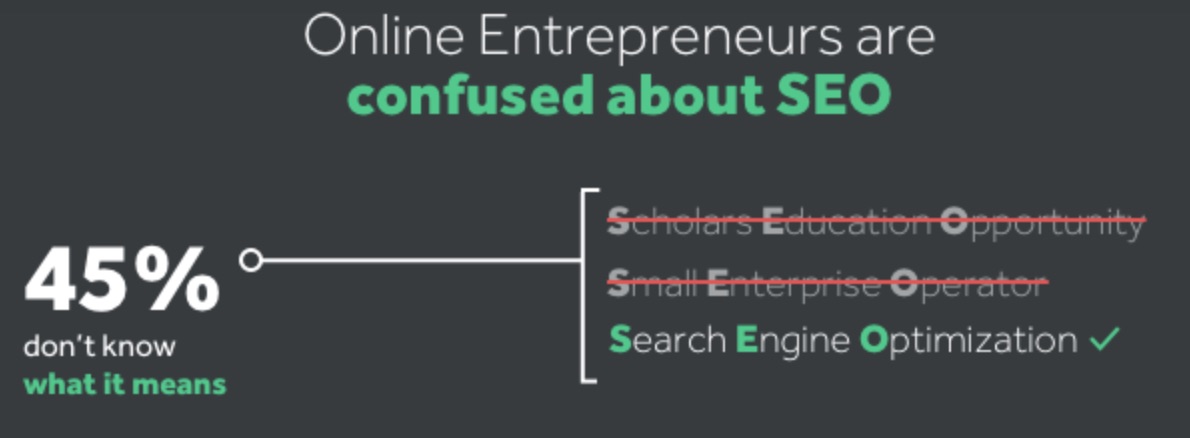

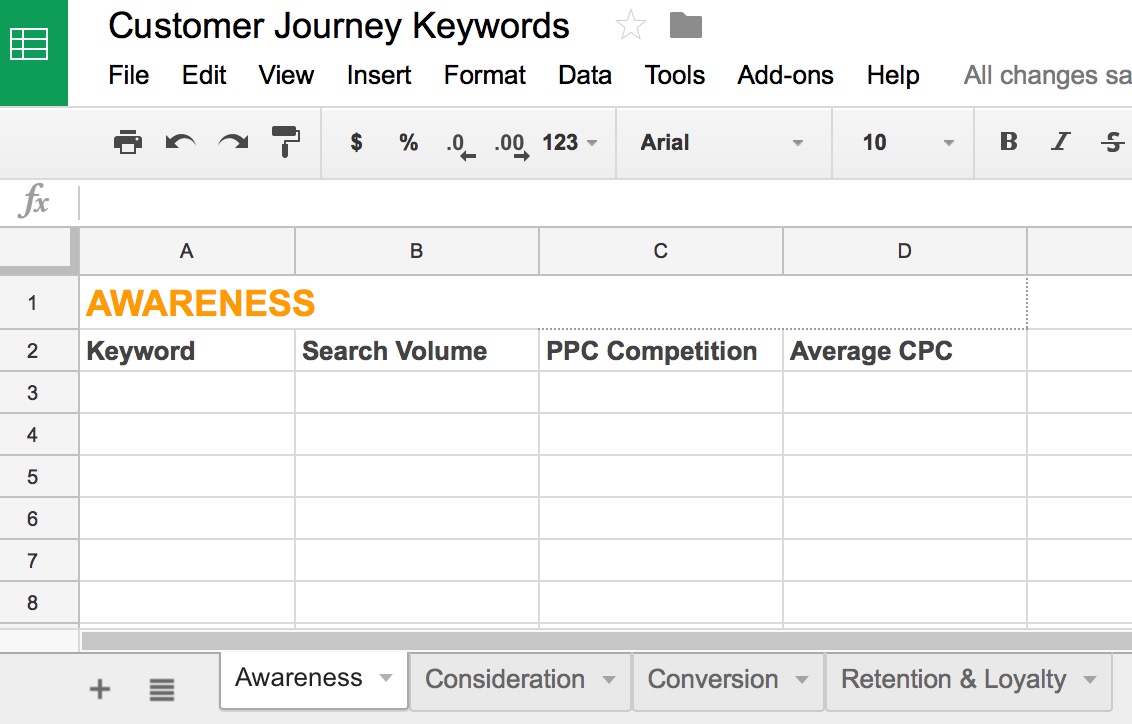


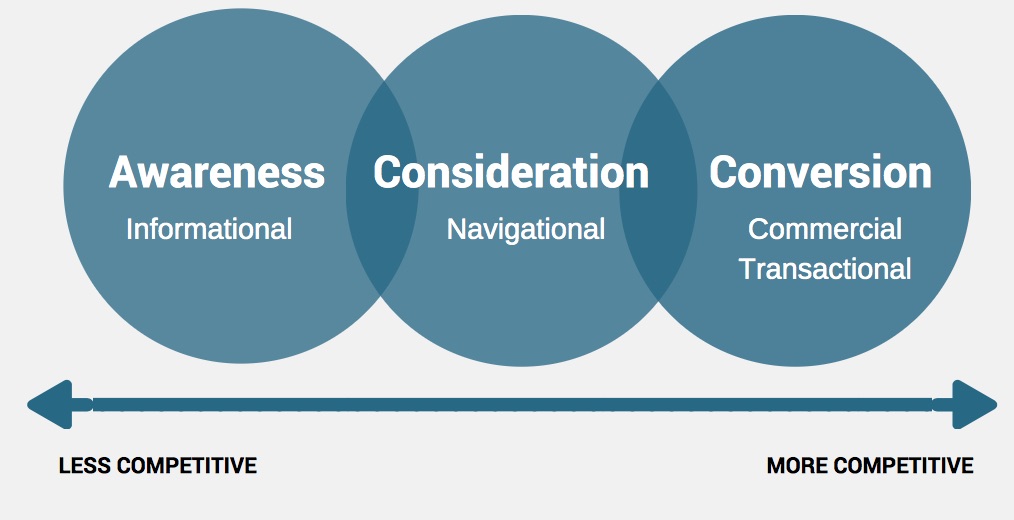

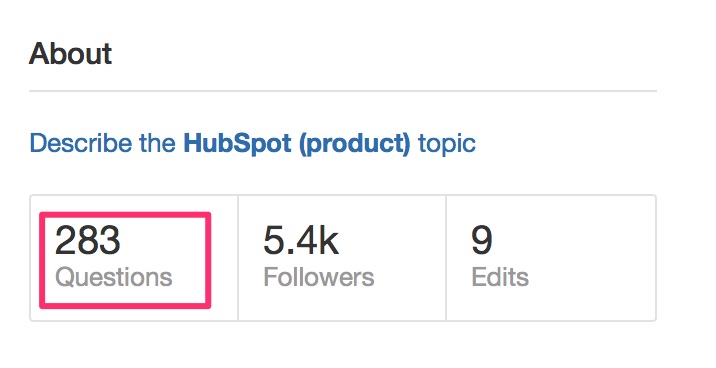





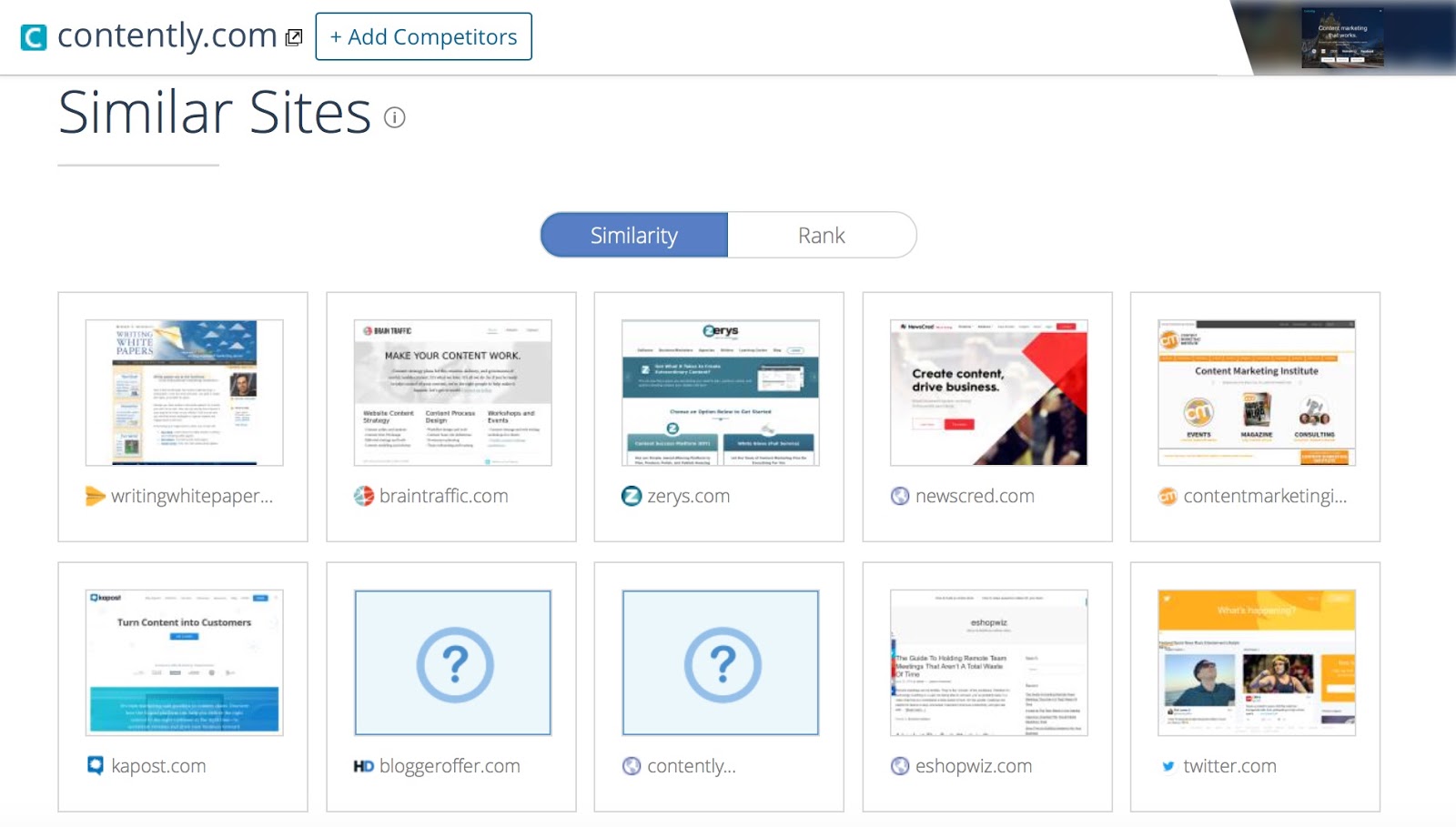

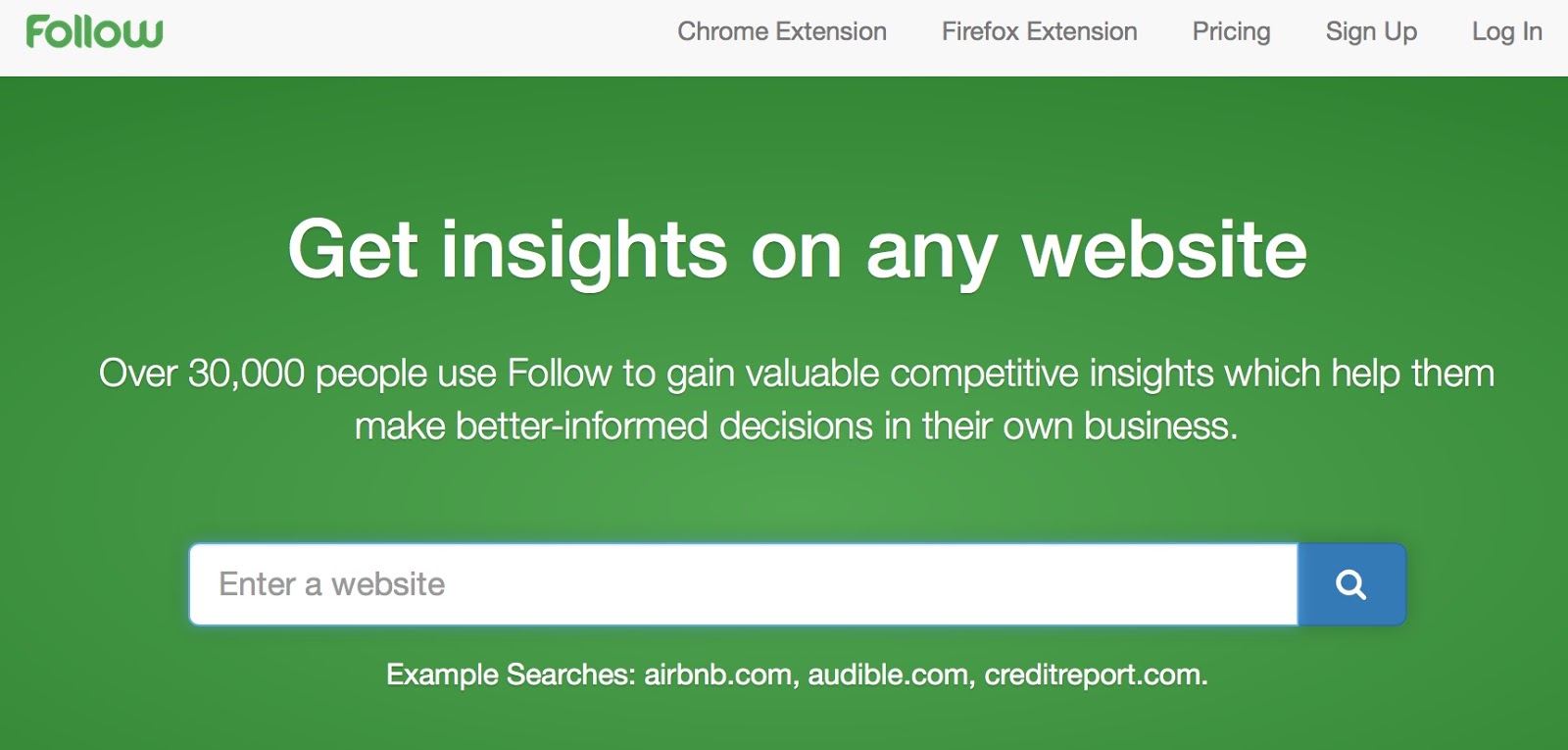

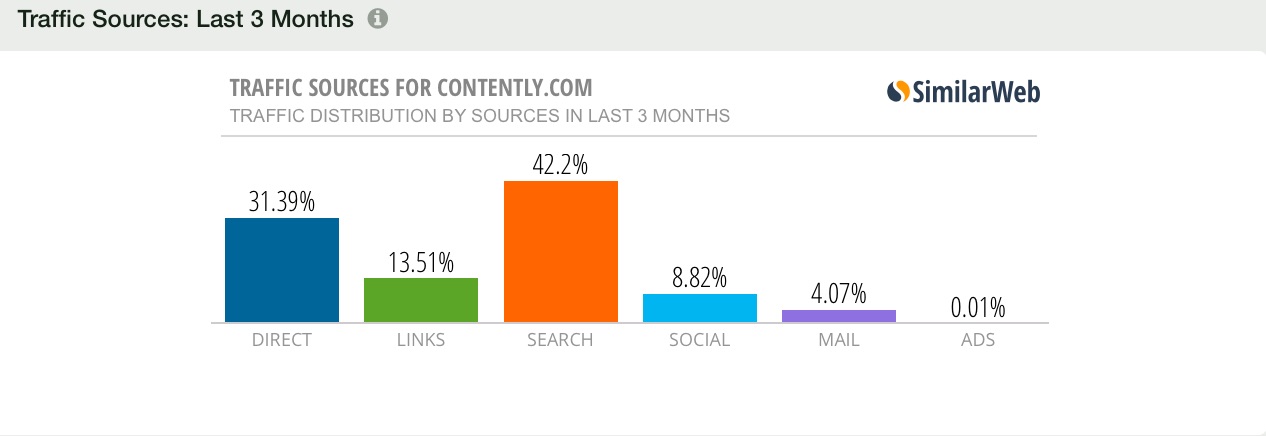
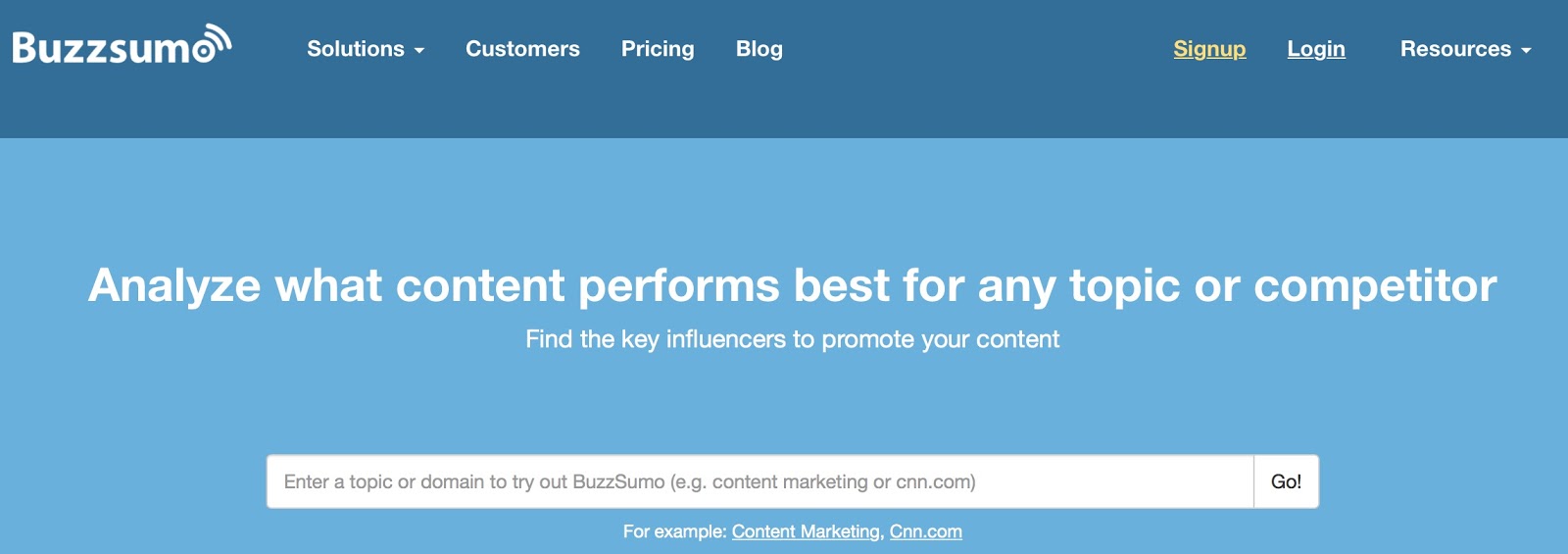





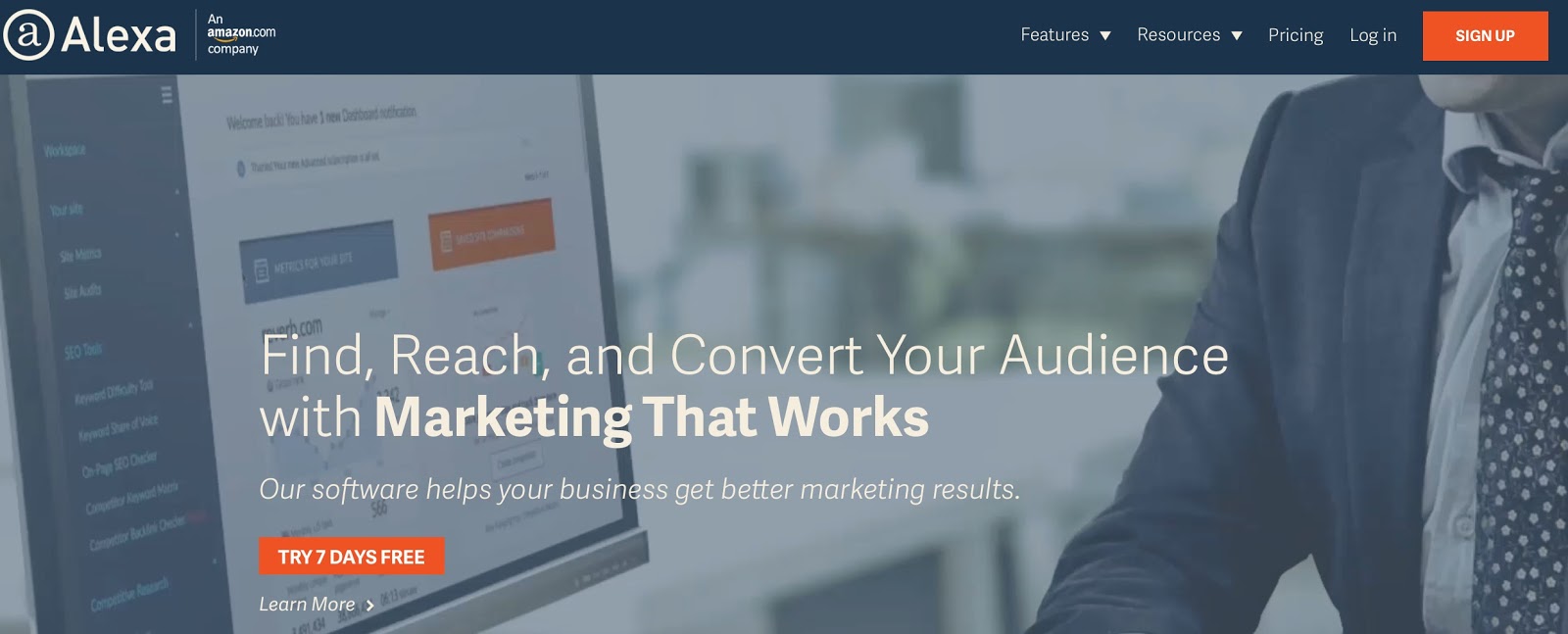




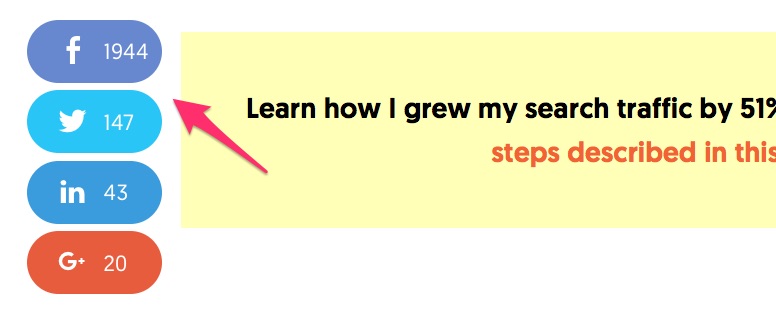
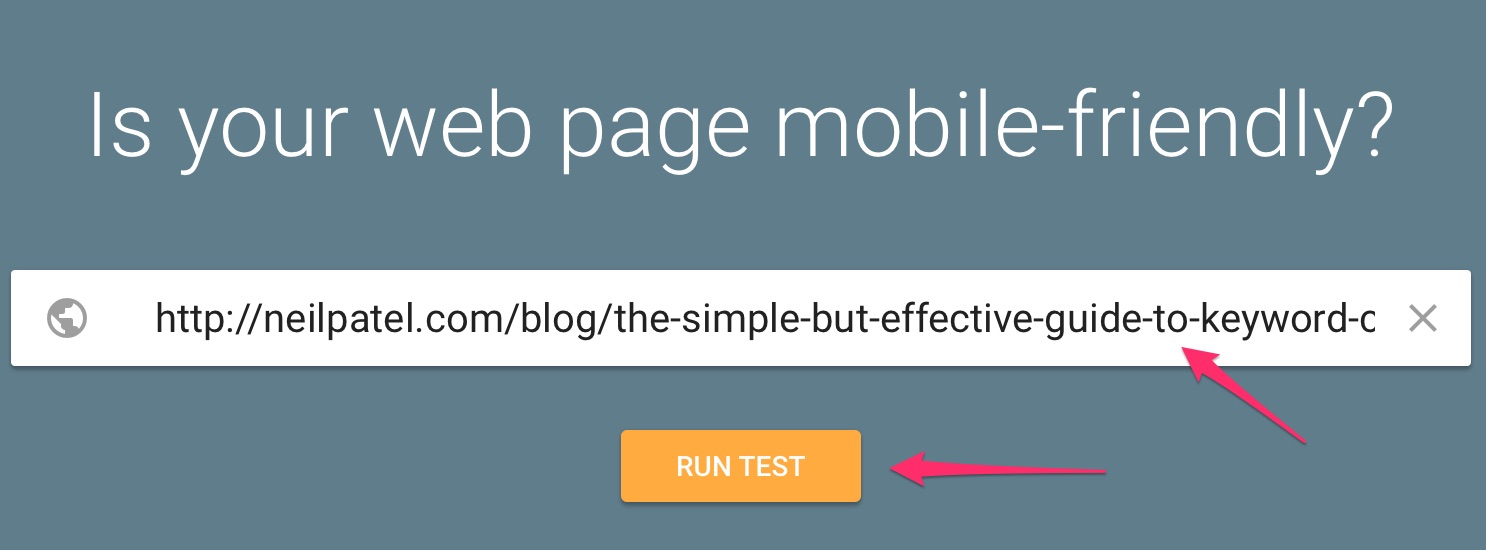

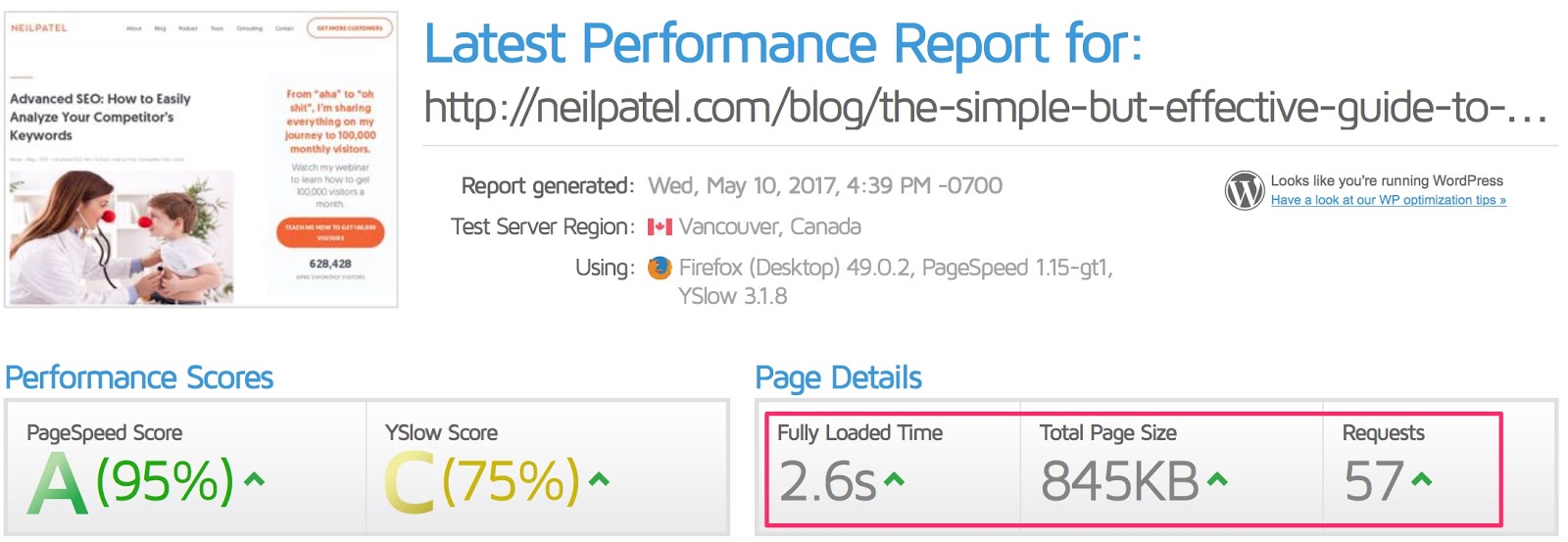
Comments (176)